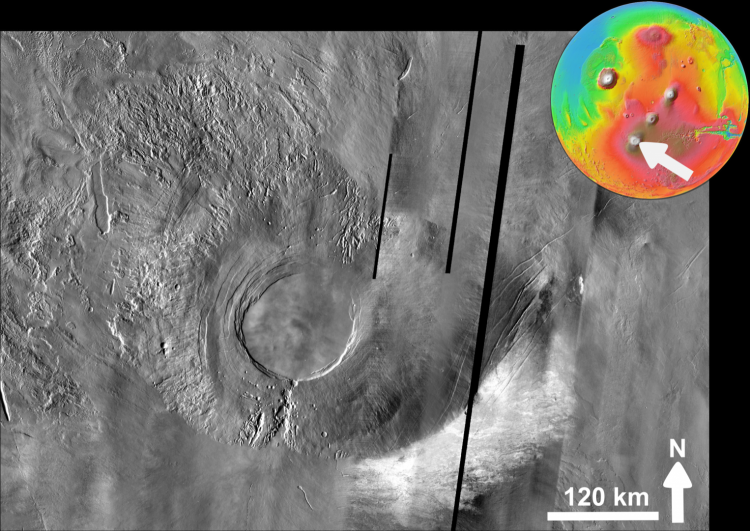A freaky elongated cloud has been appearing over the same volcano on Mars that planetary scientists simply had to give it a name.
It called the Arsia Mons Elongated Cloud or AMEC. Its long bright trail has become a familiar feature over the peak known as Arsia Mons, to the southeast of the more famous Olympus Mons. The cloud appears and reappears above the volcano, but scientists say it doesn't come from the volcano itself. And it shows up like clockwork: ESA scientists studying the Mars Express orbiter expected that the weird cloud would show up this time of the year.
"We have been investigating this intriguing phenomenon and were expecting to see such a cloud form around now," Jorge Hernandez-Bernal, a Ph.D. candidate at the University of the Basque Country in Spain and the lead author of the ongoing study, said in a statement released by the European Space Agency (ESA).
The ESA said that they caught the cloud clocking in as long as 1,100 miles (1,800 kilometers), according to ESA. AMEC is composed of water ice and is formed by the way local winds interact with Mars' topography. This phenomenon happens on Earth too: it's called orographic lift.
The way AMEC appears is amazing. It doesn't just come, stick around for a while then disappear. Rather, it forms and dissipates over the course of a few hours each morning on the planet then comes back the next day. This behavior makes the weird cloud challenging for scientists to study.
Good thing there's Mars Express. The orbiter carries an instrument known as the Visual Monitoring Camera, which makes it capable of photographing a wide swath of the planet in one frame. And the spacecraft's orbit lines up to put Arsia Mons in its view during the morning hours when the cloud is visible.
AMEC was last seen on Mars in 2018. When it appeared over the Martian volcano then and again now, the days are the shortest of the year in the Red Planet's northern hemisphere and the longest of the year in the southern hemisphere. Arsia Mons itself is located just a bit south of the Martian equator and stretches to an altitude of about 12 miles (20 km).
Whether how long has the weird cloud been appearing on Mars scientists don't know, but they hope that by regular observations, they will have an answer to this question.




